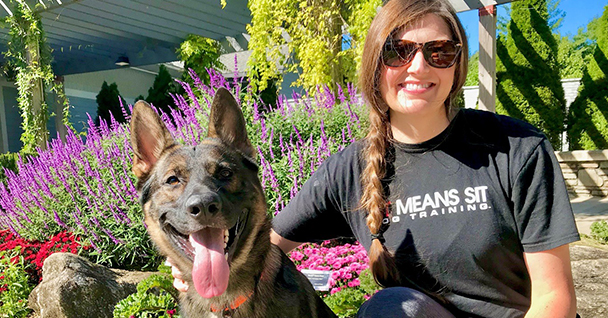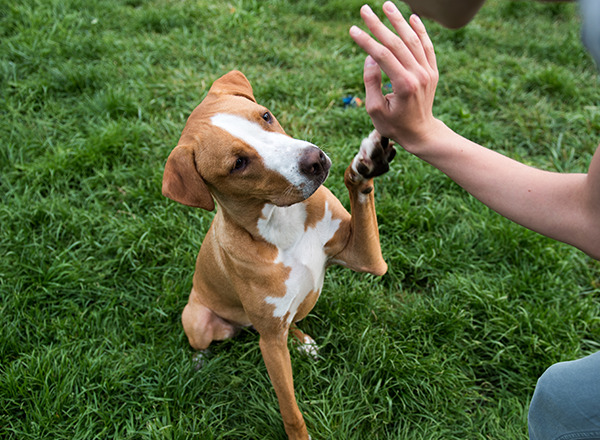Common Behavioral Issues and Their Solutions in Dog Training
Common Behavioral Issues and Their Solutions in Dog Training
Blog Article
Essential Tips for Successful Dog Training: A Guide for Animal Owners
Reliable pet dog training is a multifaceted procedure that needs a tactical approach customized to both the family pet's character and the owner's goals. Comprehending how to browse these challenges can considerably enhance the training experience, inevitably changing the relationship in between owner and dog.
Recognizing Dog Behavior
Understanding canine behavior is important for reliable training and fostering an unified partnership in between canines and their proprietors. dog training. Pets interact largely with body language, articulations, and actions, making it crucial for proprietors to analyze these signals precisely.

Socializing plays a significant role in pet behavior; exposure to various environments, people, and various other pets can significantly impact a pet's personality. Furthermore, factors such as type characteristics and individual character should direct training approaches, as some breeds may have certain behavioral characteristics that demand customized methods. By understanding these elements, proprietors can create an encouraging atmosphere that encourages favorable habits, leading to effective training results and a deeper bond with their family pets.
Establishing Regular Commands
Efficient communication with your pet starts with establishing consistent commands. This fundamental aspect of training is essential for cultivating understanding between you and your pet dog. Consistency in the commands you use makes sure that your canine can accurately associate details words or phrases with the desired habits.
When selecting commands, select clear, distinct words that are simple to separate and state from one another. Avoid making use of similar-sounding commands that might puzzle your pet dog. As an example, utilizing "sit" and "remain" is suitable, yet "rest" and "hit" could bring about misunderstandings.
Furthermore, keep the same tone and volume for every command. Dogs are sensitive to vocal hints, so differing your tone can create confusion.
It is just as vital to ensure that all family participants get on the very same web page regarding the commands made use of. A united front in command use will certainly protect against blended signals and reinforce the knowing process.
Favorable Support Methods
The power of favorable reinforcement in pet dog training depends on its capability to motivate preferred behaviors through benefits and appreciation. This method is based in the principle that habits complied with by favorable results are more probable to be repeated. By incorporating positive support into your training routine, you can effectively form your canine's habits in a constructive fashion.
To apply positive support, it's essential to recognize what inspires your dog, whether it be treats, playthings, or verbal praise. When your pet carries out a wanted activity, such as resting on command, instantly award them with a treat or love. This association in between the command and the positive result strengthens their understanding.
It's critical to timing the incentives properly; supplying the reinforcement within seconds of the wanted behavior assists your pet make the connection (dog training). In addition, consistency is essential-- make certain that all relative use the very same commands and reward systems to prevent complication

Progressively, you can decrease the regularity of deals with as your canine learns the habits, transitioning to praise or intermittent benefits. This technique not just fosters a strong bond in between you and your dog but likewise advertises a positive discovering environment, making training a delightful experience for both.
Socialization and Interaction
Constantly revealing your dog to a variety of atmospheres, individuals, and various other pets is crucial for their social advancement. Socializing should begin early, preferably throughout the critical window of 3 to 14 weeks, when young puppies are most responsive to new experiences. Nevertheless, older dogs can likewise profit from recurring socialization efforts.
Present your pet dog to various setups, such as parks, pet-friendly shops, and metropolitan areas. This direct exposure assists them adapt to various stimuli, decreasing anxiety and fear responses. Urge favorable communications with other dogs and individuals, ensuring that these encounters are safe and controlled to foster self-confidence.
Use structured playdates with genteel pet dogs, as this can enhance your pet's social skills and teach them ideal habits. Obedience classes and training sessions likewise provide superb chances for socialization, permitting your pet dog to interact with others in a monitored atmosphere.
Display your pet dog's body language during communications, as this will aid you evaluate their convenience level. Slowly increase exposure to even more challenging scenarios while guaranteeing that each experience is positive. A well-socialized pet dog is much more likely to show balanced behavior, making them a delight to have in any kind of setting.
Dealing With Common Training Obstacles
Every pet owner will certainly experience training obstacles at some point, no matter of their pet dog's age or socialization level. Discover More Here Recognizing typical concerns such as stubbornness, distractions, and terror can assist in establishing effective methods for renovation.

Diversions throughout training sessions can derail focus. To fight this, begin training in a peaceful setting with minimal stimuli. Slowly present disturbances as the dog becomes much more skillful in commands. Short, regular training sessions are additionally efficient in preserving interest.
Fearfulness can impede a pet dog's knowing procedure. Steady desensitization to the resource of concern, combined with positive reinforcement, can aid alleviate anxiousness. Perseverance is critical; never ever require a pet dog right into a scenario that triggers distress, as this may intensify the problem.
Inevitably, understanding and dealing with these typical difficulties with a structured technique will promote a much more efficient training experience, enhancing the bond between pet dog and owner while promoting effective learning.
Verdict
In recap, successful pet training relies upon a thorough understanding of canine actions, the facility of constant commands, and the application of positive reinforcement techniques. Socialization plays a crucial duty in developing well-adjusted animals, while dealing with typical training challenges calls for patience and flexibility. By executing these essential approaches, animal proprietors can foster a solid bond with their canines and advertise desirable habits, inevitably resulting in an unified relationship between people and their canine companions.
Comprehending pet behavior is necessary for reliable training and fostering an unified relationship in between pooches and their owners.Socialization plays a considerable duty in dog behavior; exposure to different settings, individuals, and other animals can substantially influence a dog's temperament.The power of positive reinforcement in canine training lies in its ability visit the site to urge preferred behaviors through incentives and praise. By integrating favorable support right into your Get the facts training regimen, you can efficiently shape your pet dog's habits in a positive fashion.
In recap, effective dog training relies on a detailed understanding of canine habits, the facility of constant commands, and the application of favorable support strategies.
Report this page